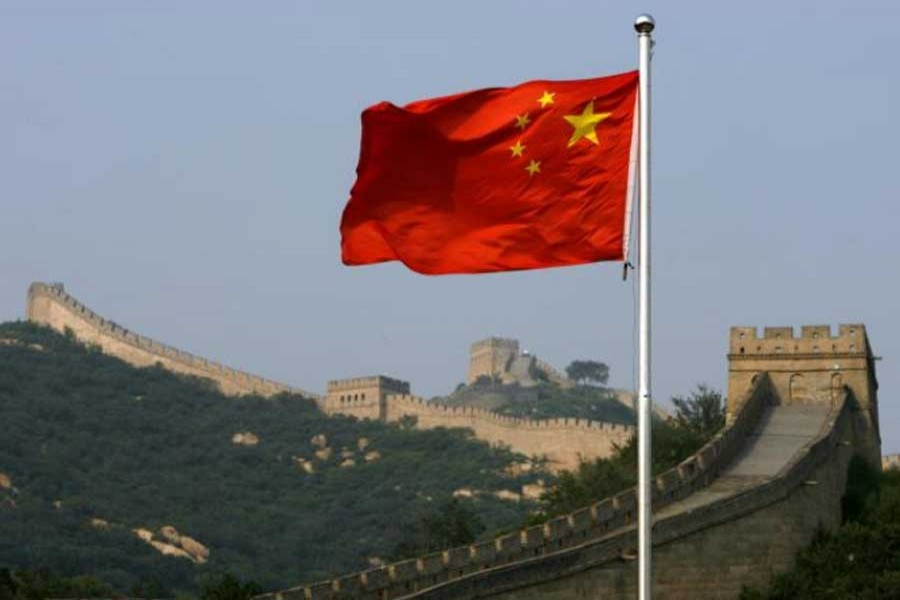
Published :
Updated :

Since the beginning of "reform and opening-up" policy in 1978 under Deng Xiaoping, China has adopted the policy of multilateral trading system based on a far more liberalised trade regime. As a move forward in line with the policy, China joined the World Trade Organisation (WTO) in 2001.
One of the significant aspects that followed China's entry into the WTO is its Duty-Free and Quota-Free (DFQF) treatment to the least developed countries (LDCs). The Customs Tariff of Import and Export of China refers to "duty-free" facility as a "special and preferential tariff treatment for least developed countries" or "LDC scheme." The DFQF scheme for LDCs offered by China under WTO rules came into effect on July 01, 2010.
At the start, China granted zero-tariff to 60 per cent of its total tariff lines, covering 4,762 tariff lines imported from 33 LDCs which concluded "exchange of letters" for that purpose. Later, China extended duty free facility to LDCs in the second phase on July 01, 2013. At that phase, China granted duty-free facility to more imported products from LDCs covering 95 per cent of its total tariff lines -- 7,381 out of 8,243.
Most significantly, China renewed its LDC scheme on January 01, 2015 as a further step to help boost exports from LDCs to China. The third phase of the scheme covers 97 per cent of China's tariff lines, including 8,036 out of 8,285, to the LDCs. The duty free treatment was applied to a number of products including plastic products, leather, wood, textiles, clothing and others.
The facility has been provided to those LDCs that completed formal exchange of letters of agreement with China by 2015. In this regard, 24 LDCs from Africa and only Afghanistan from South Asia have completed exchange of letters of agreement with China.
On the other hand, 14 LDCs, including Myanmar and Nepal, which have not completed exchange of letters of agreement with China by 2015, are now benefiting from the second phase of China's preference coverage -- 95 per cent import tariff lines.
So far, China has implemented its LDC scheme into three phases-- 2010, 2013 and 2015. It is to be noted that completion of the exchange of letters was the requirement for the LDCs at each phase to qualify for duty free treatment from China.
Besides WTO DFQF facility, another option remains for the LDCs that are members to other preferential trade agreements, such as-- Asia-Pacific Trade Agreement (APTA) and free trade agreements to avail China's duty-free treatment. For instance, the LDC signatories to the APTA, Bangladesh and Lao People's Democratic Republic (PDR), are now enjoying zero duty on certain products to Chinese market. Technical assistance and flexible "rules of origin" for LDCs such as 35 per cent of local content aside, special concessions covering 1,251 tariff lines are provided to LDCs under APTA. On the other hand, Myanmar and Lao PDR, under the China-Association of Southeast Asian Nations (China-ASEAN) Free Trade Agreement, are benefiting from China's 90 per cent tariff lines on its imported products from these countries since January 01, 2015.
Due to the absence of exchanges of letters of agreement, exporters of Bangladesh and Mauritania are only enjoying the WTO DFQF coverage at 60 per cent instead of 95 per cent or 97 per cent of China's tariff lines. As a result, Bangladesh's major exportable items are subjected to higher tariffs as these are not covered by the duty free facility.
While Bangladesh is receiving China' zero tariff treatment on certain products as a founding member of APTA, the United Nations Conference on Trade and Development (UNCTAD) reports that the duty-free coverage that China has granted to Bangladesh under the APTA is much less than China's LDC tariff exemption scheme under the WTO. Bangladesh Tariff Commission (BTC) also finds the DFQF facility more beneficial than the preferential tariff treatment under APTA offered by China.
Another issue of concern is that in order to avail DFQF concession to the extent of 97 per cent of China's tariff lines, Bangladesh will have to drop the preferential tariff facility that the country currently receives from China under APTA, as per the rules of Chinese government. Bangladesh also needs to conclude exchange of letters of agreement in order to benefit from China's LDCs DFQF scheme. Some experts, however, raise the issue that the requirement of 40 per cent value addition under the WTO DFQF instead of 35 per cent under APTA may cause some difficulties for Bangladesh.
Bangladesh may opt for more preferential treatment or duty free facility on 97 per cent of Chinese products considering the matter in totality. Although LDC graduation is not far away, there are still few more years for Bangladesh to avail the benefits of duty free facility in Chinese market. After the LDC graduation, expectedly in 2024 along with three-year transition in 2027, Bangladesh can negotiate for continuation of preferential tariff treatment through other arrangements.
China announced tariff adjustment or zero tariffs under APTA on a total of 8,549 types of goods including chemicals, agricultural and medical products, clothing, steel, and aluminium products from July 01, 2018. As per the adjustment policy, tariffs on 2,323 categories of products, some of which are exported from Bangladesh, have been lowered.
China also commenced rounds of "import tariff reductions" since 2015 on an array of imported goods such as drugs, textiles, apparel, paper-made commodities covering 1,585 industrial products. Bangladesh needs to intensely engage with China to be able to gain from the latter's economic reforms.
Sultana Yesmin is a PhD candidate at the School of Politics and International Studies (SPIS), Central China Normal University, Wuhan, Hubei, China.


 For all latest news, follow The Financial Express Google News channel.
For all latest news, follow The Financial Express Google News channel.